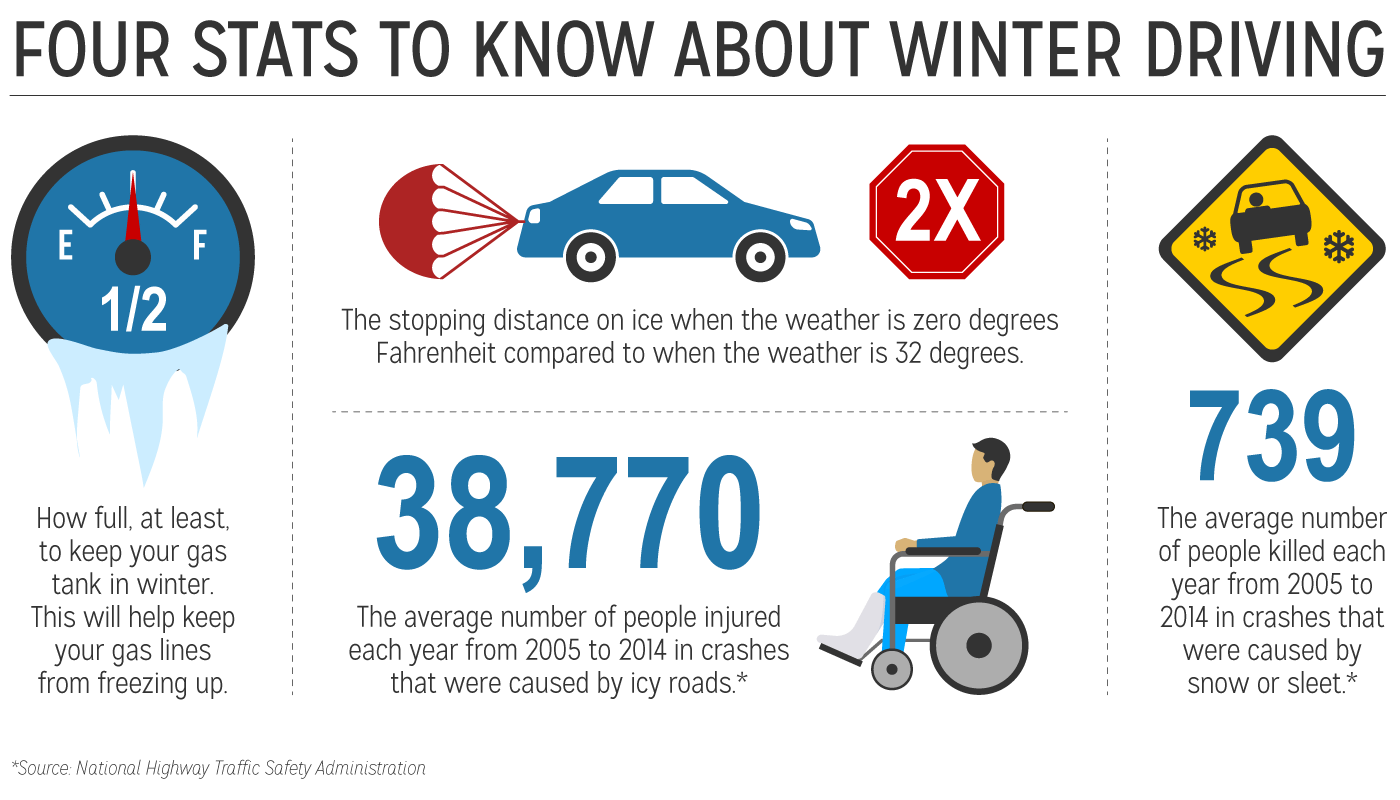7 Tips to Help You Drive Safely in Wintry Weather
Avoid winter driving hazards with this advice for dealing with ice and snow.
Driving in the winter can be a nerve-wracking experience. Slick roads, reduced visibility, freezing temperatures and other factors all can contribute. It’s important to know a few safety rules before you head out. Here are some tips and insights to help you smartly navigate the wintry roads:
1. Know What’s Coming
Don’t get caught off-guard. Watch weather reports, free weather alerts and delay trips when especially bad weather is expected. If you must leave, let others know your route, destination and estimated time of arrival. Even if you can drive well in snow, others can’t.
2. Get Your Ride Ready
As winter hits, keep your vehicle in peak operating condition. When the temperatures drop, keep your gas tank at least half full to avoid a gas-line freeze-up. Pack blankets, gloves, a hat, food, water and necessary medication in case you become stranded in the snow.
3. Clean All the Snow
Even if you’re only driving a short distance, clean the snow and ice off your whole car—not just the windshields. This protects you from snow falling onto your windshield—and onto cars behind you.

4. Drive Slow and Steady to Stay Safe
Accelerate and decelerate slowly to maintain traction, and keep plenty of distance between your car and other vehicles. Never use cruise control on any slippery surface. When you do slow, keep your heel on the floor and use the ball of your foot to brake gently, squeezing the pedal slowly. Take extra care on bridges and overpasses, where slick spots freeze first and melt last.
5. Stay a Step Ahead
Plan your movements well in advance and do one thing at a time. Brake, then turn, then accelerate. Don’t stop if you can avoid it; slow your speed and keep moving. When driving uphill, keep a steady, consistent speed and don’t press your brakes.
6. Use the Right Lights
In heavy snow at night, use your low beams. The light from your high beams will reflect off the snow—as well as heavy rain and fog—and can cause a glare, impacting your visibility. Fog lights can be a good way to improve nighttime visibility in bad weather, when extra light is needed.
7. Get Practice Early
During the first snowfall, take your teens to an empty parking lot in daylight and let them practice to gain experience. Teens are at greater risk than adults of crashing, due to their inexperience, and those who got their license in warmer months may have never driven in wintry conditions.